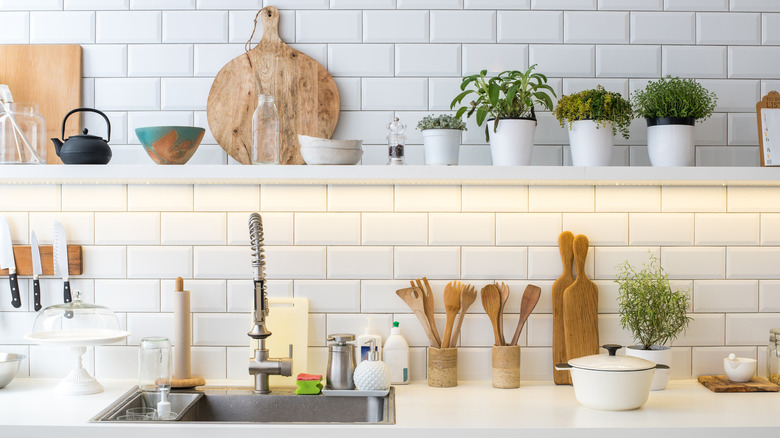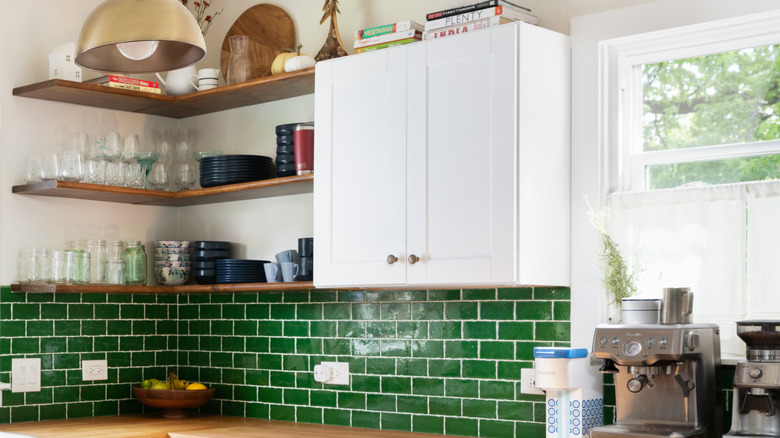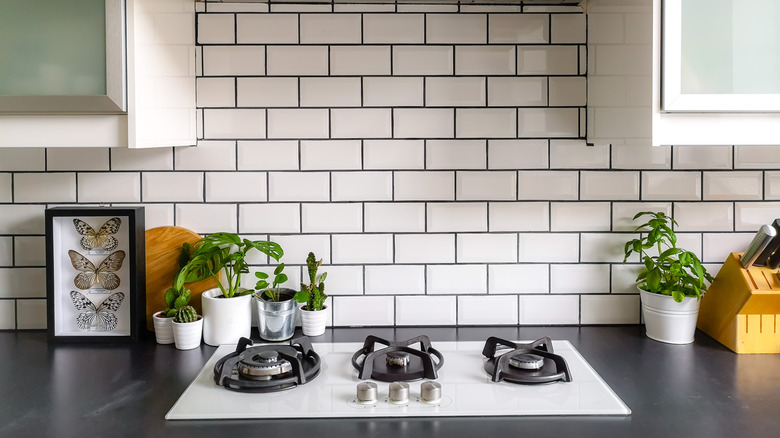Are Adhesive Tile Mat Backsplashes Right For Your Kitchen?
It's time to redo your kitchen, and a backsplash is in order. You may be considering using an adhesive tile mat to make the job easier and avoid some common kitchen backsplash application mistakes. These products, which have become readily available, seem to be a simple fix. Just peel off the backing, apply to the wall, peel off the other side, and then stick your tile to them. Easy and done, right? Adhesive tile mat backsplashes are an option for some areas, but they may not be ideal for kitchens or in areas of the kitchen where there's significant moisture.
The adhesive tile mat is a huge sheet of sticky material on either side. They will stick well to the wall, while the other side sticks to the back of your tile. Once you place them, you can then grout the tile you've applied to create a professional look. Without having to grout and place each tile individually, this can be an easy and quick way to update your space. The biggest drawback to them, though, is that they are not ideal in any area where there's significant humidity or moisture in general. That includes the kitchen. The adhesive isn't likely to hold well enough in wet conditions, meaning all your time and hard work could come tumbling down at any time.
Why you may want to consider adhesive tile mats
The goal with adhesive tile mats is quite simply to make the job of applying tile to a backsplash easier. There are benefits to this product. For example, you will not have to worry about mixing grout and mortar and applying it to the wall or the back of the tile. Instead, this double-sided-tape-like material goes on first, and you simply stick the tile on it.
The advantage here means you don't have to wait for the typical curing of the grout before you apply the tile, nor do you have to worry about getting the mortar just right and level to create an even surface for the backsplash. You'll still need to grout over the top of the tile once in place to fill in gaps unless you decide not to do so, but the overall process may be a bit faster.
There's also more time forgiveness here. For example, if you can only do small sections at a time due to time restrictions, you can do that without having to worry about mortar drying out.
Key considerations for using adhesive tile mat backsplashes in your kitchen
If you decide to pursue the use of adhesive tile mat-backed backsplashes, be sure to choose the highest quality possible and be sure they are recommended specifically for wet environments. Some companies offer products that can be used in wet conditions including behind the kitchen sink and even in the shower. Not all products are equal, though.
The mats themselves are the double-sided adhesive that you'll add to the tile. However, the first side of the adhesive sheet needs to stick well to the wall it's being placed on. If that wall isn't smooth or has areas of damage, it will not lay flat, which means your tile will not have a strong, durable surface to rest on. Not all mats are flexible to work around grooves and dips in that surface like it's possible to do with grout adhesive and tile mortar.
Another consideration is that you may not have the luxury of using any type of tile. The mats may have limitations on the specific type of tile based on its weight. If the tile is too heavy, it could fall off and crack. Also, you'll still have to grout over the top of them and cut the tile to fit your space, which is some of the more complicated parts of applying tile to a backsplash. Tiling a backsplash is hard work, and mats can help in some areas, but they're not a simple solution.


